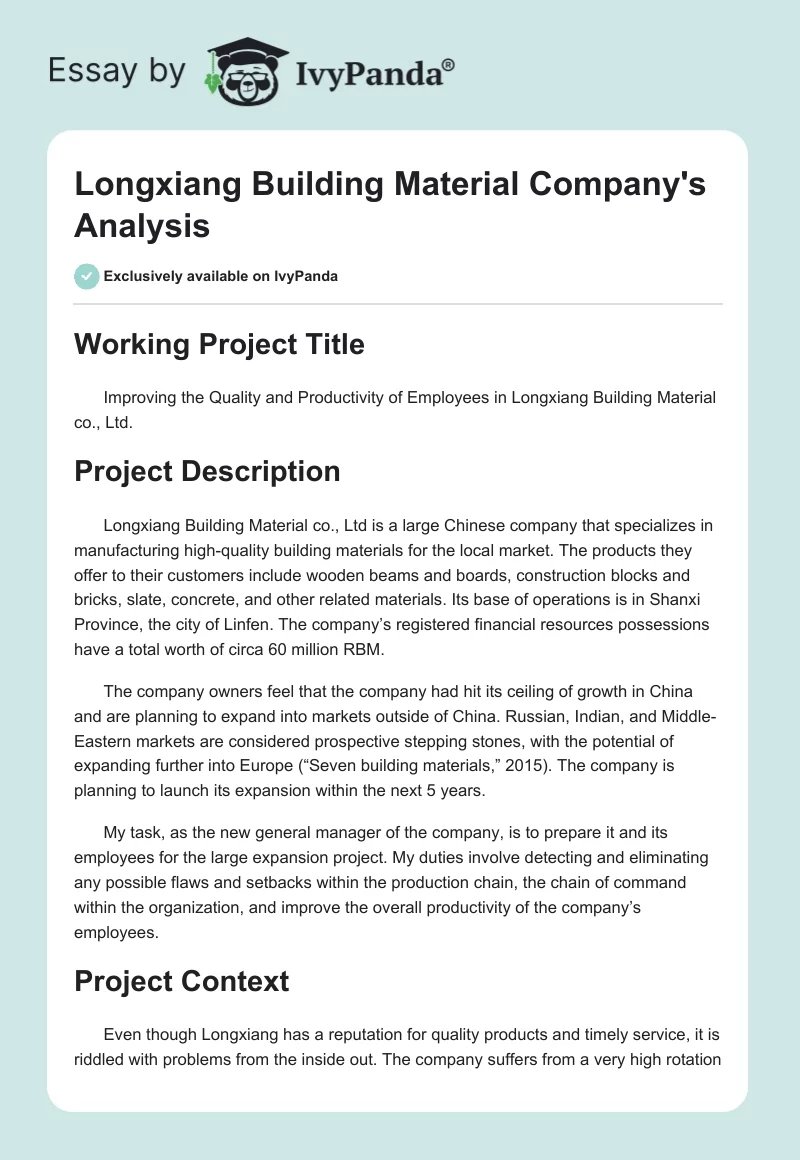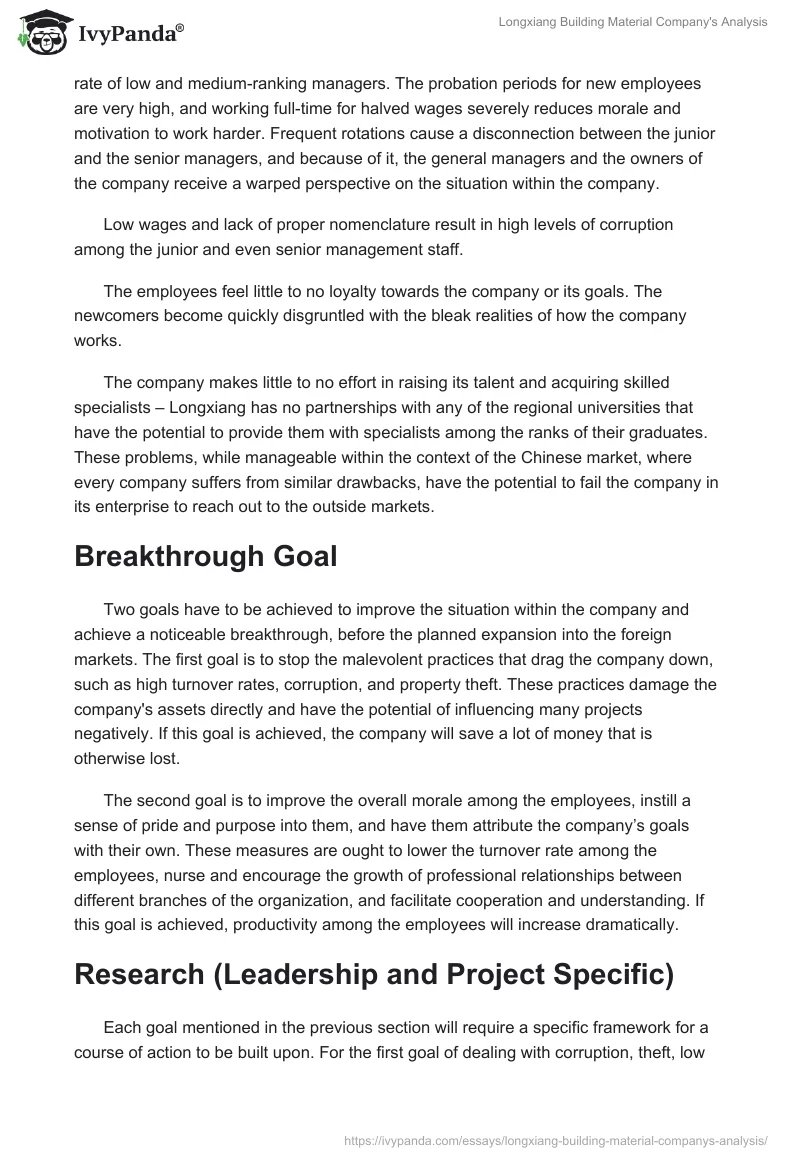Working Project Title
Improving the Quality and Productivity of Employees in Longxiang Building Material co., Ltd.
Project Description
Longxiang Building Material co., Ltd is a large Chinese company that specializes in manufacturing high-quality building materials for the local market. The products they offer to their customers include wooden beams and boards, construction blocks and bricks, slate, concrete, and other related materials. Its base of operations is in Shanxi Province, the city of Linfen. The company’s registered financial resources possessions have a total worth of circa 60 million RBM.
The company owners feel that the company had hit its ceiling of growth in China and are planning to expand into markets outside of China. Russian, Indian, and Middle-Eastern markets are considered prospective stepping stones, with the potential of expanding further into Europe (“Seven building materials,” 2015). The company is planning to launch its expansion within the next 5 years.
My task, as the new general manager of the company, is to prepare it and its employees for the large expansion project. My duties involve detecting and eliminating any possible flaws and setbacks within the production chain, the chain of command within the organization, and improve the overall productivity of the company’s employees.
Project Context
Even though Longxiang has a reputation for quality products and timely service, it is riddled with problems from the inside out. The company suffers from a very high rotation rate of low and medium-ranking managers. The probation periods for new employees are very high, and working full-time for halved wages severely reduces morale and motivation to work harder. Frequent rotations cause a disconnection between the junior and the senior managers, and because of it, the general managers and the owners of the company receive a warped perspective on the situation within the company.
Low wages and lack of proper nomenclature result in high levels of corruption among the junior and even senior management staff.
The employees feel little to no loyalty towards the company or its goals. The newcomers become quickly disgruntled with the bleak realities of how the company works.
The company makes little to no effort in raising its talent and acquiring skilled specialists – Longxiang has no partnerships with any of the regional universities that have the potential to provide them with specialists among the ranks of their graduates. These problems, while manageable within the context of the Chinese market, where every company suffers from similar drawbacks, have the potential to fail the company in its enterprise to reach out to the outside markets.
Breakthrough Goal
Two goals have to be achieved to improve the situation within the company and achieve a noticeable breakthrough, before the planned expansion into the foreign markets. The first goal is to stop the malevolent practices that drag the company down, such as high turnover rates, corruption, and property theft. These practices damage the company’s assets directly and have the potential of influencing many projects negatively. If this goal is achieved, the company will save a lot of money that is otherwise lost.
The second goal is to improve the overall morale among the employees, instill a sense of pride and purpose into them, and have them attribute the company’s goals with their own. These measures are ought to lower the turnover rate among the employees, nurse and encourage the growth of professional relationships between different branches of the organization, and facilitate cooperation and understanding. If this goal is achieved, productivity among the employees will increase dramatically.
Research (Leadership and Project Specific)
Each goal mentioned in the previous section will require a specific framework for a course of action to be built upon. For the first goal of dealing with corruption, theft, low salaries, and other functional errors, it will be appropriate to research and utilize the Structural Framework of Bolman and Deal. This framework focuses on structural elements within the organization, as well as particular strategies, practices, and adaptations (Mcleod, 2015). The causes and effects of malpractices within the company are obvious, and they can be partially dealt with by conducting structural alterations within the company. However, the structural framework alone will not remove all the problems within Longxiang, as its roots are directly tied with our second goal.
To improve employee morale, dedication, and productivity, the general manager will have to study and adopt the transformational leadership model. It is a model that can produce great results but requires the agent of change to possess charisma and dedication to become a role model for his or her employees. It relies greatly on leading by example, encouraging the employees to grow, helping followers overcome personal challenges, and acting as a trainer and coach, thus promoting improvement (“Transformational leadership,” 2016). Utilizing this strategy will instill loyalty to the manager and the company by affiliation. This, in combination with adequate and fair compensation for hard work, will significantly improve the company’s team cohesion and productivity.
References
McLeod, S. (2015). Bolman and Deal frameworks.Web.
Seven building materials Russia can’t import enough of. (2015). Web.
Transformational leadership. (2016). Web.


